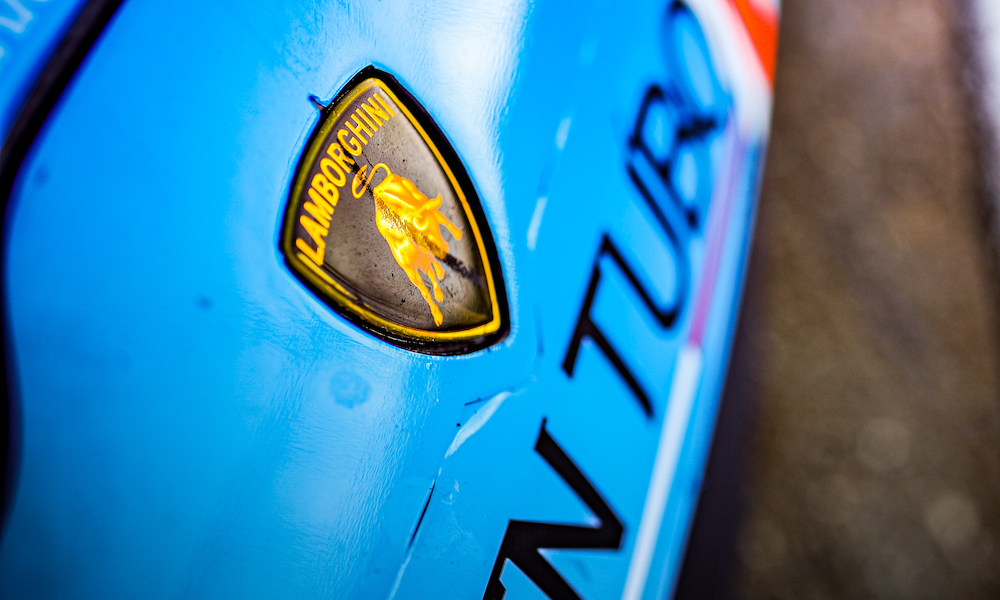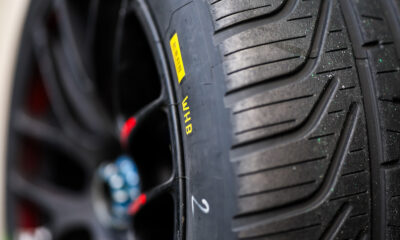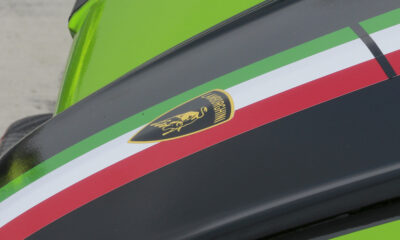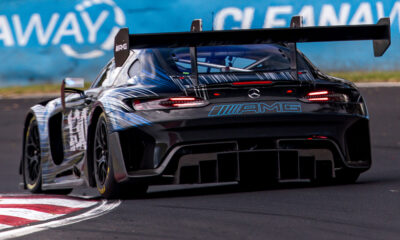Lamborghini is already working on the successor to the Huracan GT3 that is projected to arrive in 2026 according to the Italian manufacturer’s global head of motorsport.
The Huracan has been competing in championships that use GT3 cars since 2015 and was updated with different Evo kits in 2019 and at the start of this year.
However, Lamborghini’s replacement of the production Huracan will result in a brand-new model being rolled out for its customer racing programs in GT3 and Super Trofeo.
The successor vehicle is set to be a hybrid-powered supercar, forming part of the company’s shift to an all-electrified portfolio.
The electric element of the powertrain would be removed to comply with the GT3 technical regulations, in a similar vein to the Ferrari 296 GT3 and Acura/Honda NSX GT3.
The Lamborghini Huracan GT3 EVO2 has a three-year lifespan that is scheduled to run through the end of 2025. That comes after the first evolution in 2019 ended up being extended to four years due to a COVID-related delay in the EVO2’s introduction.
In March, Road & Track reported that the Huracan’s road-legal successor is set to arrive towards the end of 2024, meaning that there could be one full year in which it overlaps with the final planned season of the Huracan GT3 EVO2.
“From our side, we are committed in the GT category until 2030 [so far as] the technical regulations allow us to race with a GT3 car,” Lamborghini’s motorsport boss Giorgio Sanna told Sportscar365.
“Talking about GT3 and Super Trofeo, we will be there. We are working on the successor of the Huracan.
“Now, I cannot tell anything more, but we are already working on the first life cycle that will be from 2026 to 2028.”
Sanna did not want to go into the technical details of the future GT3 challenger, considering the same information for the road-going version remains under wraps.
Lamborghini relied heavily on fellow Volkswagen brand Audi during the early stages of its customer racing program but the Huracan EVO2, which was introduced in GT3 this year and in Super Trofeo last year, marked a step in terms of independence.
The EVO2 implements design elements from the STO version of the Huracan road car while retaining the 5.2-liter V10 naturally aspirated engine derived from the Audi R8.
Sanna stressed that there was no intention to further extend the Huracan’s lifespan in GT3 by giving it a third evolution upgrade.
Last year he indicated that the Huracan might remain active through 2026, but that no longer appears to be part of the plan.
“We are not interested [in a third upgrade] because the EVO2 that is racing now is homologated until 2025,” said Sanna.
“At the end of the day, in respect of who is investing in our race program, we don’t change the car for three or four years.
“This means that the existing Super Trofeo will race until 2025, and then there will be a new one.
“We are already working on the new Super Trofeo and GT3 platform. New platform means new car – the Huracan follow-up.”
Lamborghini Undergoing “Learning Year” With EVO2
Sanna added that the current season has so far been a “learning year” for the brand and its customer GT3 teams as they get accustomed to the EVO2 upgrade kit.
After being one of the multiple new vehicles that struggled on its debut in the Rolex 24 at Daytona, the EVO2’s competitiveness has improved since then with Franck Perera delivering its first victory in last month’s DTM season-opener at Oschersleben.
“We know we can make a better setup and we have to work more on the fine-tuning together with our customer teams,” Sanna suggested.
“Overall, I am satisfied. From January until now, we have done a lot of improvements, from our side, on the car. Small things but important details.
“The teams are learning the car, understanding how to manage it in terms of peak of performance and race pace. They are two different things.
“This year is a learning year for us because the car is new. And for the teams, because they have to understand the car.
“Then, there are teams that have the opportunity to do more mileage and arrive more ready at the start of the season. Some others, for budget reasons, can only do mileage during the race weekends. There is always something to learn there.”

























